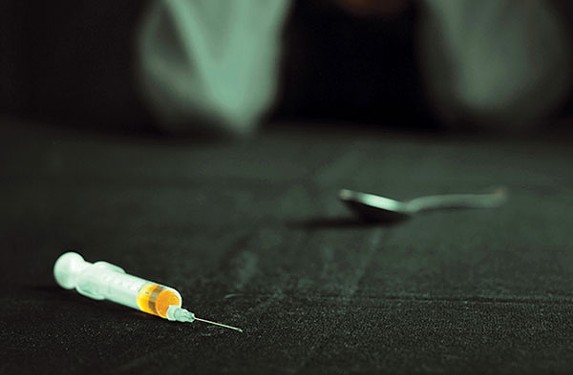Why are modern cars equipped with airbags? Because, unfortunately, accidents happen — not to all drivers, but certainly to many.
The vehicles owned by perfect drivers have airbags. The vehicles owned by careless drivers have airbags. Airbags are not just an accessory of the irresponsible. They are widely accepted security measures for all.
Many public-health advocates dream of a day when the powerful overdose-reversal drug naloxone will be perceived the same way.
“It’s not you,” says Traci Green, the deputy director of the Injury Prevention Center at Boston Medical Center. “The airbags in your car are not [there] because you’re a crappy driver.”
Green and other medical professionals want to shift public perception away from demonizing intravenous drug users and toward keeping them safe.
In one 24-hour period this past April, Pittsburgh police responded to 10 heroin overdoses. And last year, more than 250 people died from heroin overdoses in Allegheny County.
The accessibility of naloxone could reduce that number. When administered to an individual suffering from an overdose of heroin or other opioids, naloxone reverses the overdose.
The drug, commercially known as Narcan, is available as a nasal spray, an intramuscular injectable or an intravenous injectable.
“It blocks the receptors in your brain that opiates attach to,” says Alice Bell, the overdose-prevention program coordinator at Prevention Point Pittsburgh. “If your body is dependent [on opioids], you’re going to feel [like you’re] in withdrawal.”
A state law, known as Act 139, that allows first responders and families and friends of intravenous drug users to carry naloxone, went into effect in November 2014. And in April, Gov. Tom Wolf’s administration announced that funds had been raised to ensure that Pennsylvania State Police troopers are equipped with the drug.
While the act was a breakthrough, there are still barriers preventing naloxone from getting into the hands of those who need it most. The cost can be prohibitive; pharmacies and pharmacists are still adapting to administering the antidote; and more training is necessary to ensure that opiate users are aware of the benefits of the medication and how to use it. These factors stand in the way of making naloxone the widely accepted airbag of intravenous drug users.


